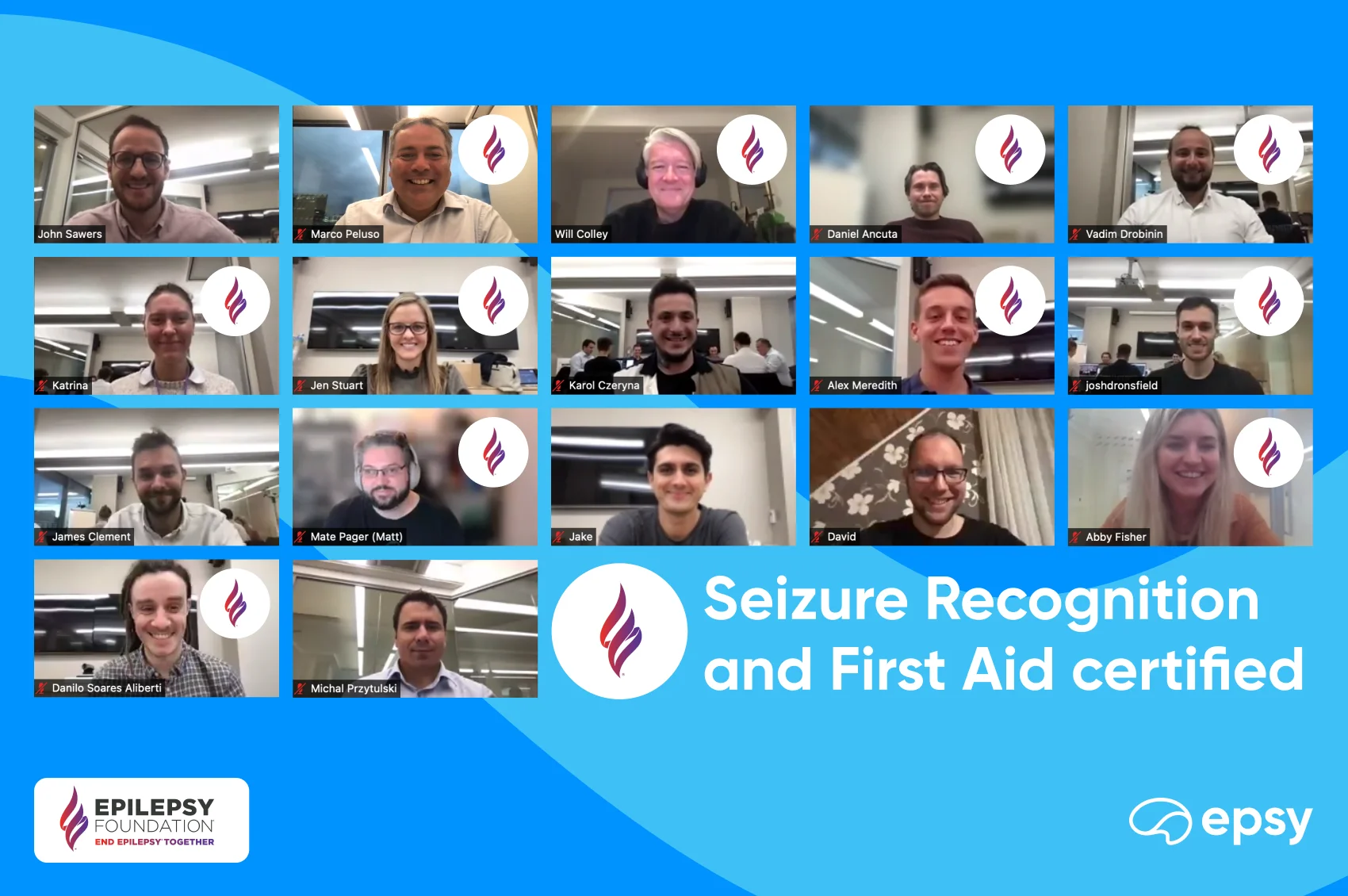
Knowing some basic seizure first aid can be helpful for many people. Whether you have epilepsy yourself, care for someone who has seizures, or would simply like to know more to help a friend, being aware of seizure first aid principles can be useful.
In this article, you’ll learn more about seizure first aid.
This article is not intended as medical advice - it is for information purposes only. If you have any specific practical questions or would like seizure first aid training, speak with a medical professional.
Important: When to call 911?
If a seizure lasts for five minutes – or the person has multiple seizures without regaining full consciousness – it may mean they are experiencing status epilepticus. Status epilepticus can be very dangerous.
Status epilepticus is considered a medical emergency. Call 911 for assistance
Introduction to seizure first aid
Most epileptic seizures last between a few seconds and a couple of minutes. If the person has had seizures before, they do not always need to go to hospital. Basic seizure first aid where they currently are, may be enough.
If you have epilepsy, it may be helpful for the people around you to know how to recognize your seizures. For example, while many people will be familiar with what a tonic-clonic seizure looks like, they might not recognize absence seizures. So you may find it useful to explain to family, friends, coworkers and teachers what your seizures look like. They might then notice if you’re having a seizure.
The Epilepsy Foundation’s seizure first aid #StaySafeSide campaign provides some simple steps for responding to seizures:
- Stay with the person and begin timing the seizure. You should not go away looking for help. Remain calm and check if they have any medical ID on them. If the seizure lasts for longer than five minutes, call 911.
- Safe means you should gently move the person away from any dangerous or sharp objects. If they are wandering around, gently steer them away from dangers such as roads or subway platforms.
- Side means if the person is on the ground and unconscious, you should try to turn them onto their side. Loosen any tight clothing around the neck (such as buttons or ties).
These general steps may be used to help provide first aid for most kinds of epileptic seizure. However, if someone cares for you regularly, they might want to consider taking an Epilepsy Foundation seizure first aid certificate course. This means they can learn about more advanced treatment, such as giving emergency medicine, first aid for absence seizures or first aid for children having seizures.
What people shouldn’t do if you’re having a seizure
The CDC lists a number of things that people should not do if someone appears to be having a seizure. These include:
- Holding the person down
- Trying to restrain the person
- Putting things in their mouth (people having seizures cannot swallow their tongues)
- Giving mouth to mouth resuscitation
- Offering the person water or food before they’re fully recovered
Creating a seizure first aid plan
It can be useful to sit down with your physician and create a seizure first aid plan that is personalized to you. You can print this out and give it to family, friends, teachers and coworkers. You could also keep it in a medical bracelet you wear on your wrist or ankle.
The Epilepsy Foundation has produced a number of seizure action plans in various languages. Find them here.
Safety and seizure first aid
It may be helpful for many different kinds of people to know basic seizure first aid. However, it is important to get adequate instruction from a medical professional and learn more before trying to use it with someone who is having seizures. If you have any doubts about seizure first aid, speak with a medical professional.

















